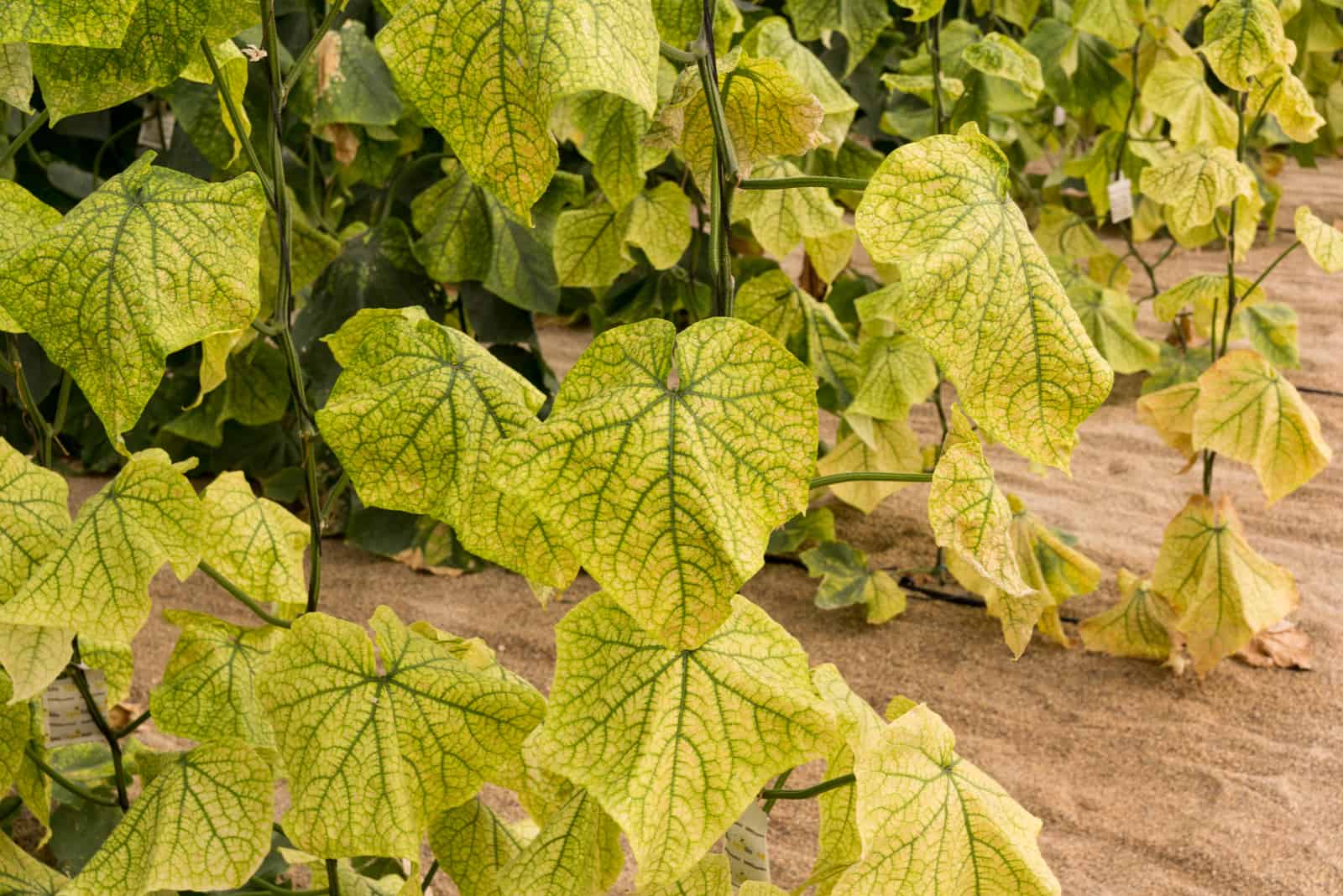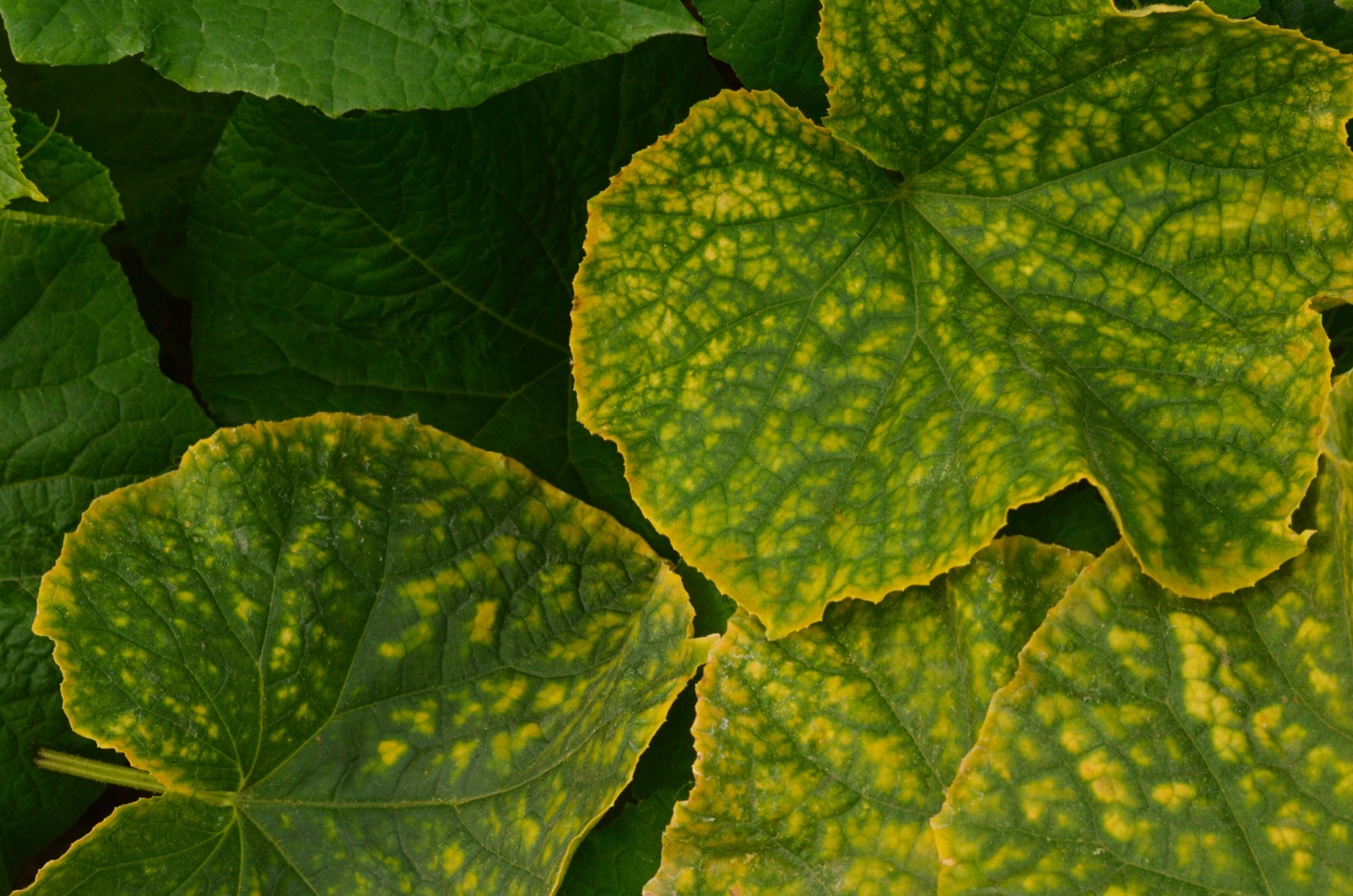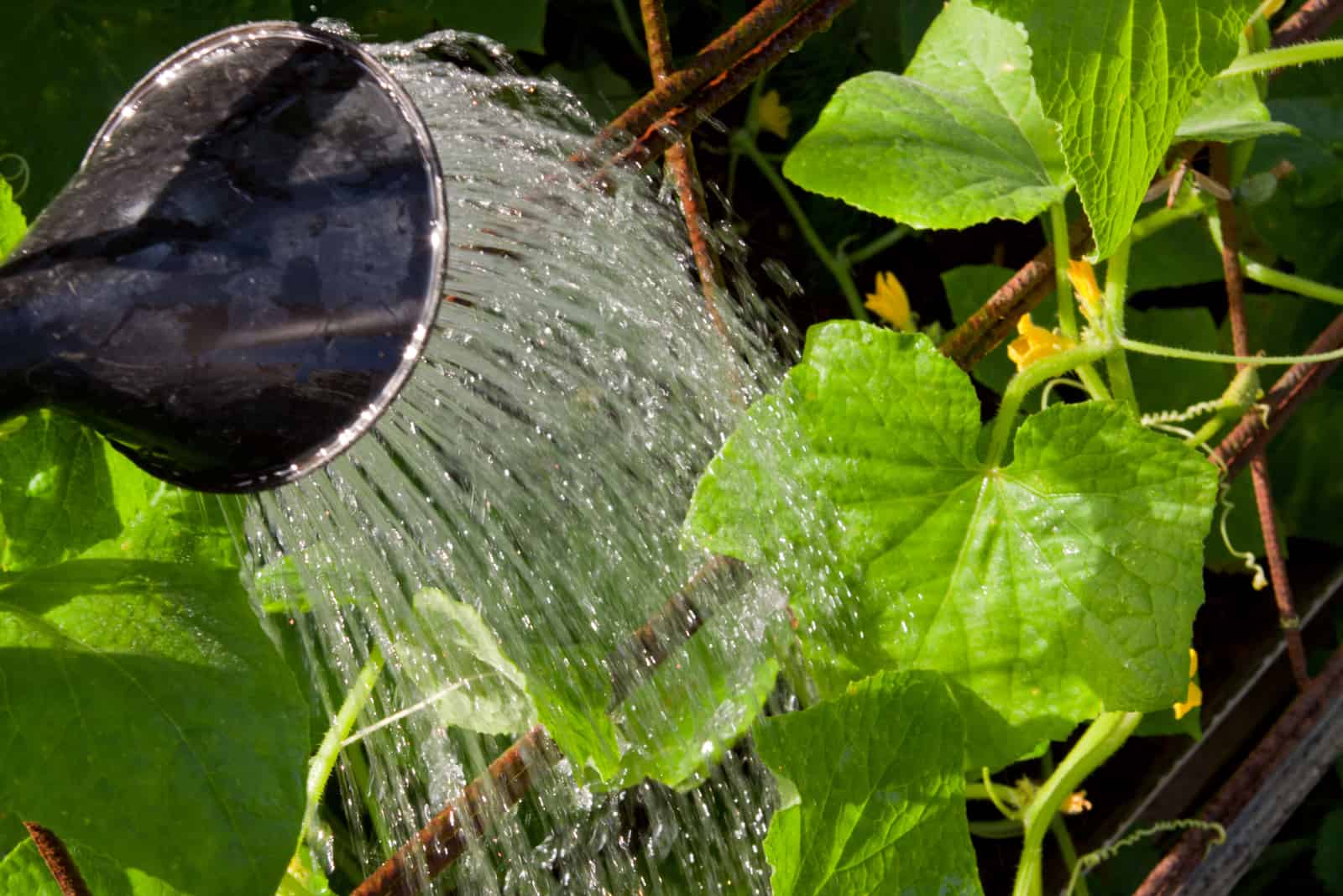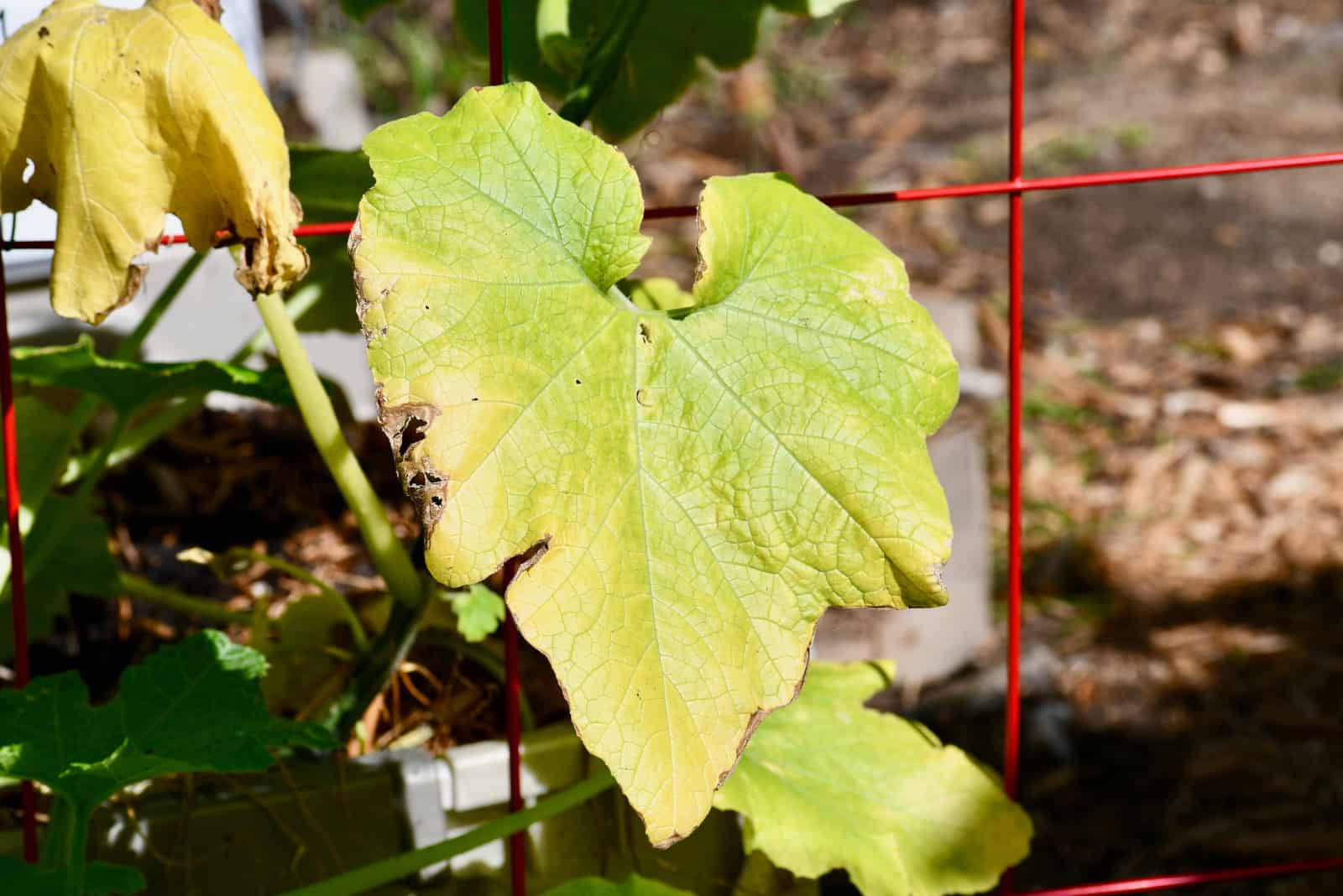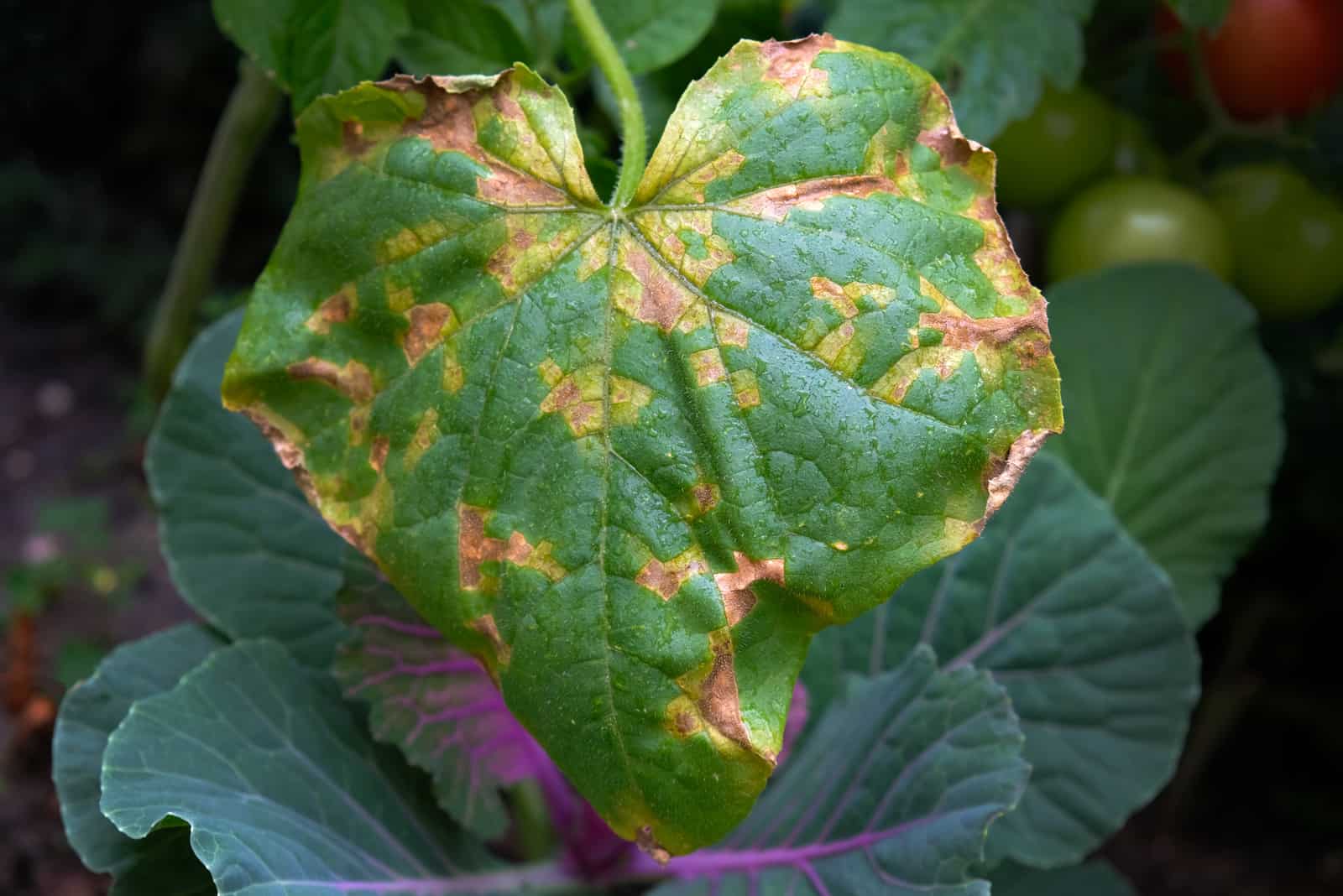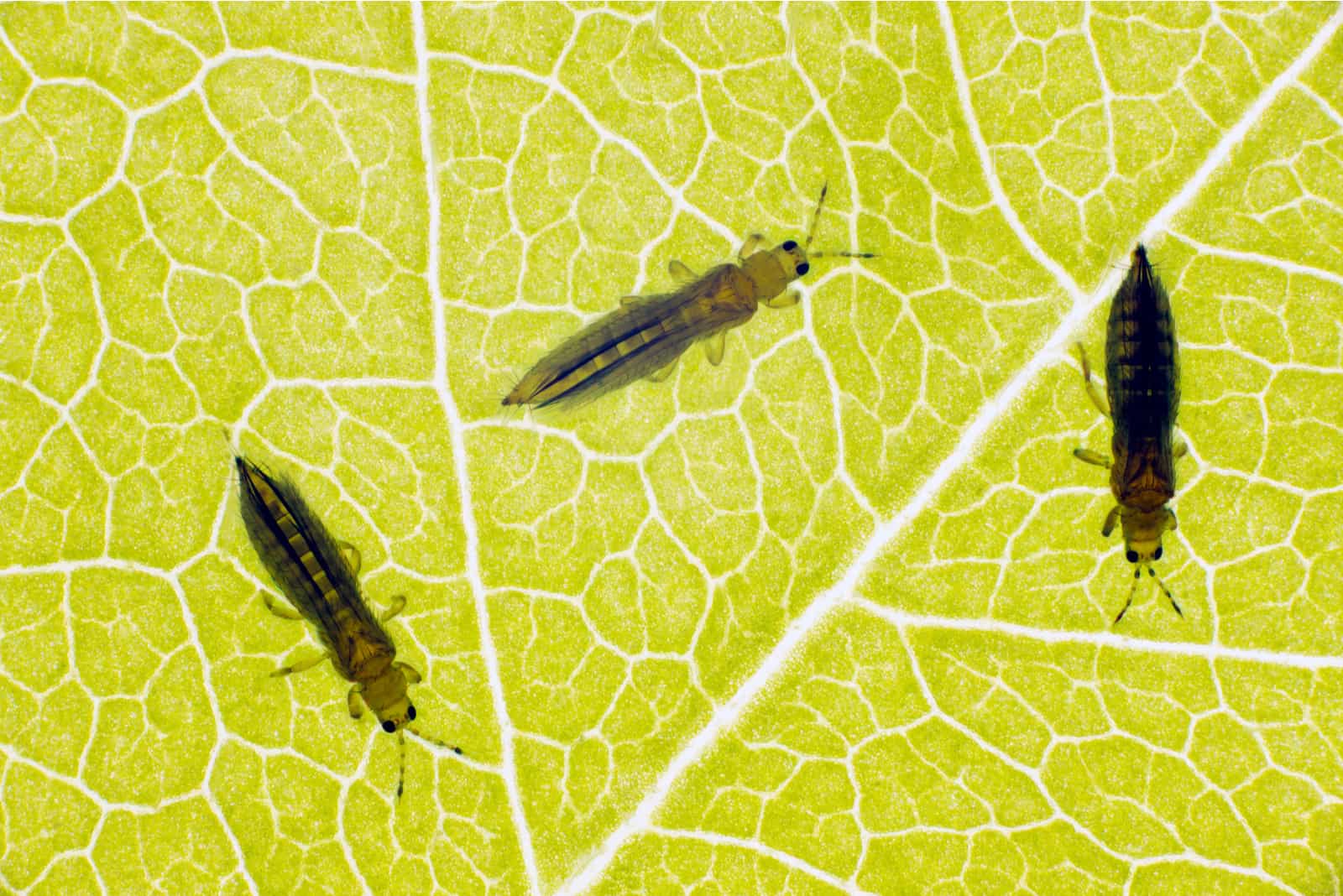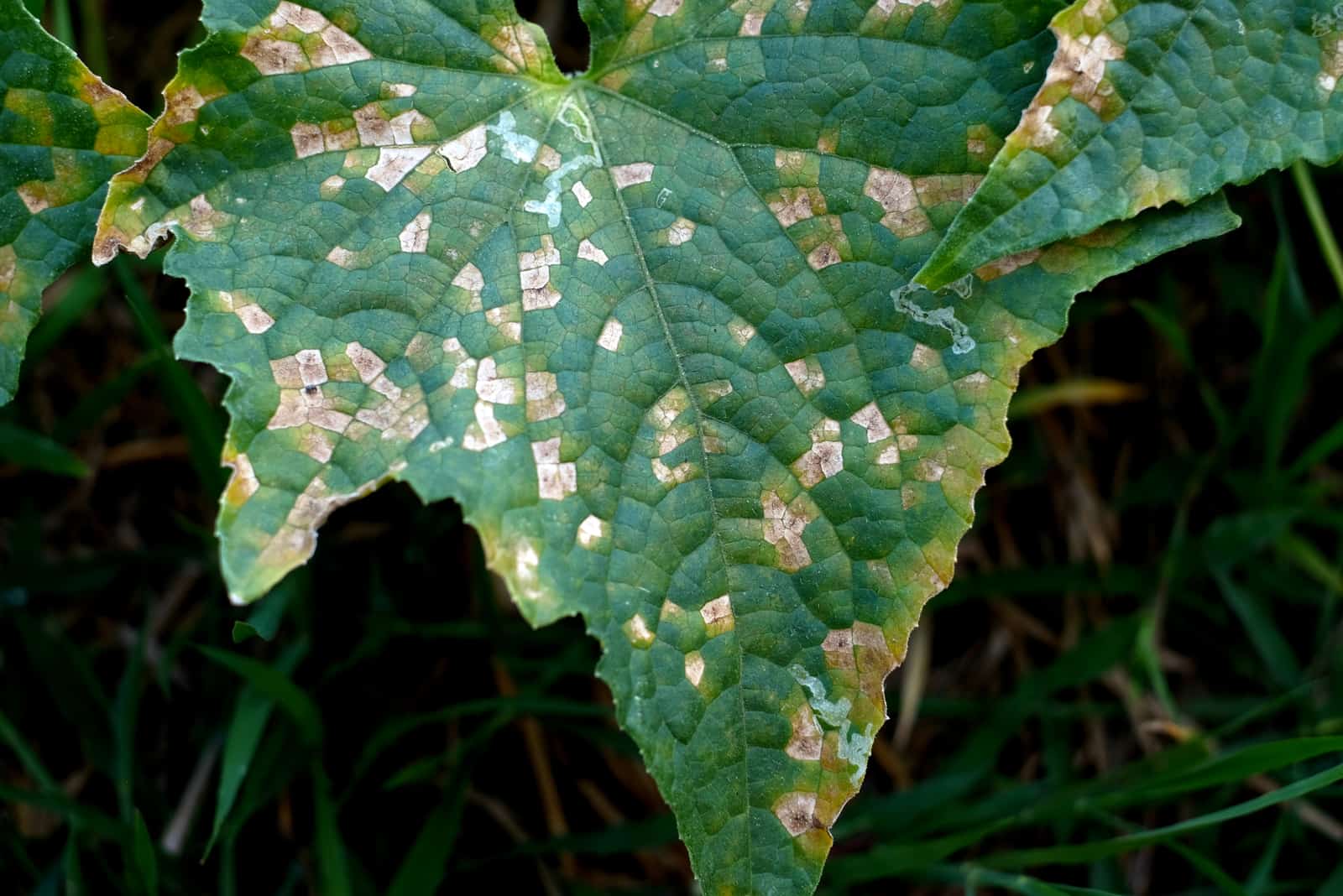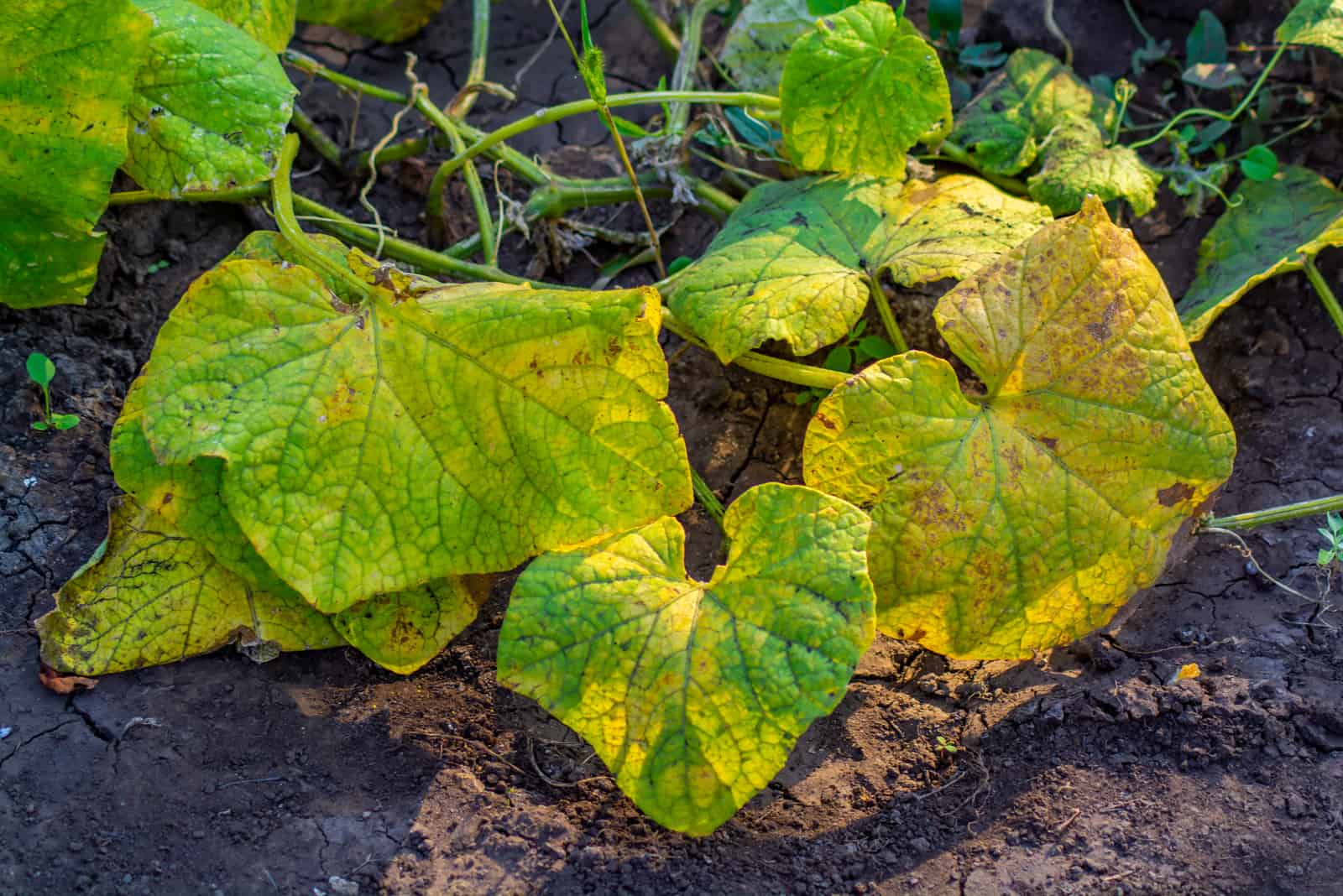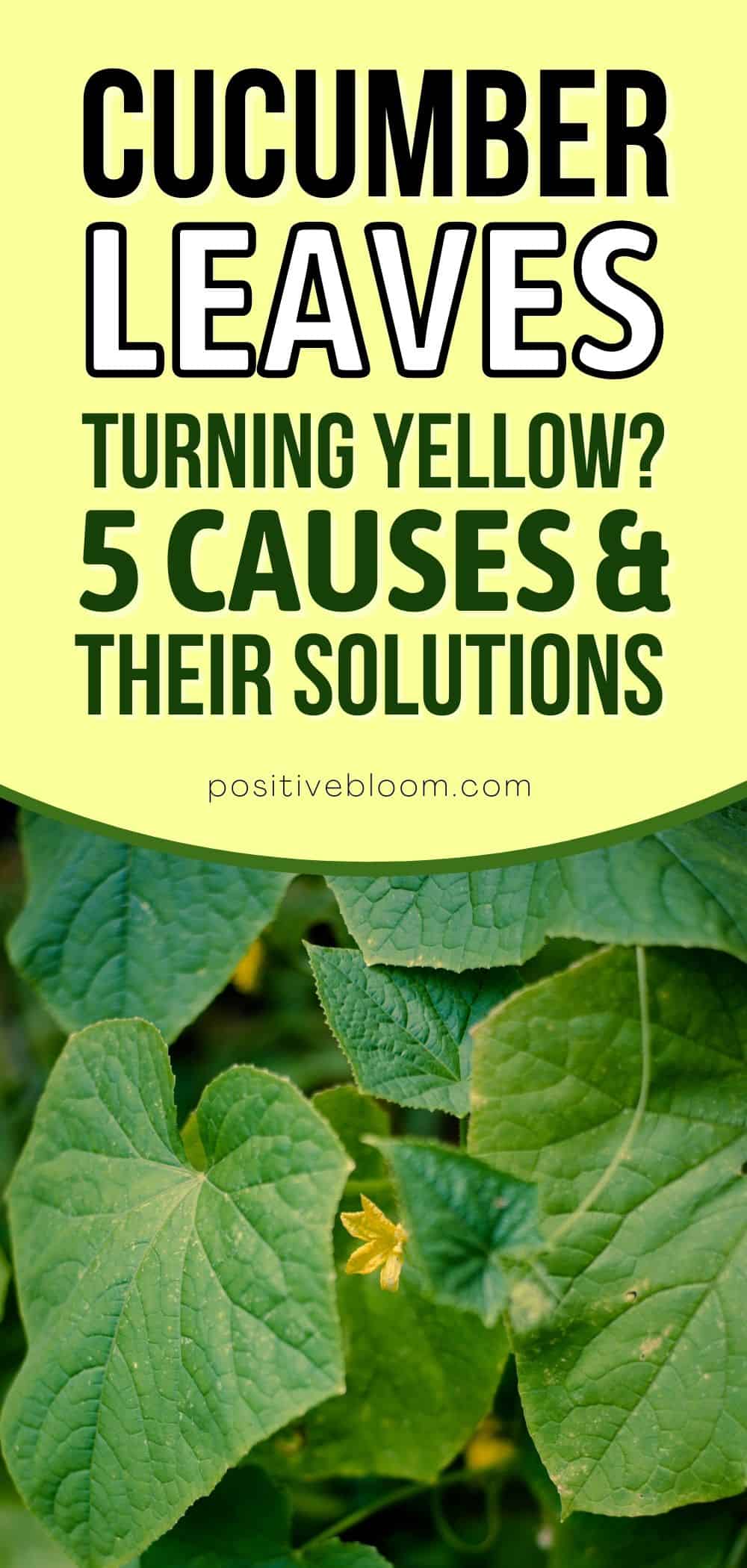Positive Bloom is an Amazon Associate and we earn from qualifying purchases through these links at no extra cost to you.
When someone asks me, “What’s your favorite fruit?” I reply, “Cucumber, of course.” And I am often met with a blank stare.
Since when has cucumber been a fruit?
Well, it has actually always been one!
Scientifically speaking, cucumber is a fruit because it contains seeds and grows from flowers or ovaries within a flower.
Though it is often considered a vegetable due to its flavor, texture, and culinary uses, it is an easily grown vegetable that is a great option in any garden.
If you already have this fruit in your garden, and have noticed the cucumber leaves turning yellow, check out these 5 common things that make cucumber leaves turn yellow.
Why Do My Cucumber Leaves Turn Yellow? 5 Possible Reasons
Cucumbers aren’t only known for their low-carb content. In fact, cucumbers have a huge amount of benefits. Some of them include hydration, cancer prevention, brain health, heart health, bone health, digestion, weight loss…and many more!
This is why they are such a staple of home gardens, and if you have noticed your cucumber leaves yellowing, it’s a good idea to look for a possible cause. And we are here to help!
Here is a list of 5 common reasons cucumber plant leaves turn yellow and how to stop them.
1. Overwatering And Underwatering
Cucumbers consist primarily of water, but that doesn’t mean they’re immune to overwatering!
Overwatering cucumbers will cause their roots to stand in water (not everyone enjoys swimming) and prevent aeration, which hinders plant nutrition.
Not only does the lack of oxygen lead to the plant leaves turning yellow, wilting, and becoming crispy, but waterlogged soil is conducive to fungal infection, which causes root rot.
If your cucumber plants have started showing spots on their leaves, stems, and fruit, it suggests the fungal infection has taken a turn for the worse.
Light gray or powdery spots are a sign of powdery mildew, a common fungal disease which affects plants. Soon the cukes will start curling up and begin looking brownish and deformed.
Your cucumbers must receive the right amount of water to prevent that from happening. Even underwatering can result in cucumber plant leaves turning yellow.
Solution: You can check if cucumbers need watering by poking your fingers one or two inches into the soil. If the soil is dry and doesn’t stick to your fingers, give some water to your plant. One or two inches of water a week should be just fine.
If your cucumber shows signs of overwatering, do the following:
1. Stop watering your cucumber plants for a couple of days so the soil can dry.
2. Ensure proper drainage by mulching your plants with straw or decomposing leaves. If root rot has affected the entire plant, replanting will not do you much good as the plant is damaged beyond repair.
3. In case of powdery mildew, invest in an antifungal spray or make one at home. Mix 1 tablespoon of baking soda and between 1 and 1/2 a teaspoon of liquid soap in 1 gallon of water. Also add 1 teaspoon of dormant oil, such as neem oil.
2. Sunlight
Yellow wilting leaves can be an indication of insufficient sunlight. As members of the cucurbit family, cucumbers are sun-lovers and need six to eight hours of sunlight each day to prosper.
Solution: If your cucumber plants are in a shaded area, move them to a place where they will receive enough sunlight for at least six hours a day or more. It’s “the more, the merrier!” when it comes to sunlight for your cucumbers!
3. Mineral Deficiency
One of the most common causes of yellow leaves on cucumbers is mineral deficiency. Cucumbers are not fussy eaters, but they are heavy feeders, and absorb plenty of nutrients and water. After all, cucumbers are made up of 96% water.
Solution: If the soil is lacking in nutrients, the plant will not be able to thrive. A soil test would be your best bet in this case as it identifies nutrient deficiency. Here are the main mineral deficiency culprits for yellowing leaves:
Nitrogen deficiency
A Nitrogen deficiency causes cucumber leaves to turn yellow and pale and also stunts plant growth.
Solution: If this happens to be the case, you need to fertilize your plants with a nitrogen-rich fertilizer. Be sure to pay close attention to the right dosage. A good idea is to add a tablespoon of ammonium nitrate to the soil once you notice the flowers have started blooming.
Repeat this process in three weeks.
Potassium deficiency
Potassium deficiency is observed through the cupping of leaves in addition to the onset of chlorosis. The flower tips will become yellow or brown and start wilting at the edges and tips. The fruits become mushy-like and grow abnormally in size.
Solution: In case of a potassium deficiency, cucumbers need to either be fertilized with a potassium-rich balanced fertilizer or supplied with organic content such as mulch.
Phosphorus deficiency
Phosphorus deficiency is marked by yellow or bronze cucumber leaves, slow growth, and a weak plant stem.
Solution: As with other minerals, the best thing to do is fertilize with a phosphorus-rich balanced fertilizer. Prior to fertilization, a garden soil test will establish the phosphorus status of the soil.
Iron deficiency
Iron deficiencies are often observed on new leaves as they will appear with green veins, while older leaves will retain their color green without the veins.
Both potassium and iron deficiency result in chlorosis. Chlorophyll is essential for photosynthesis as it absorbs sunlight, which enables green leaf pigmentation and food production. Its absence, or chlorosis, turns green leaves into yellow due to the lack of nutrients, which affects fruit production.
Solution: Spraying leaves with liquid iron or iron compounds is a quick fix. Still, a lasting solution requires adding micronutrients such as granular chelated iron to the soil, changing soil pH, or mulching.
Fertilization is also required if the soil lacks other minerals like calcium, magnesium, and zinc.
4. Pests
Yellow cucumber leaves may occur as a result of pest infestation. Unfortunately, there are several bugs that love to munch on cucumber!
a) Whitefly
Whiteflies are small, triangular-shaped, soft-bodied flying insects that feed on the underside of leaves. This is where they lay their eggs and enjoy protection from predators and sunlight.
Solution: To get rid of these squatters, you can try several methods. You could first try to shake and wash your cucumber plants, preferably with a hose. Special attention should be paid to rinsing the underside of the leaves.
The second method is to purchase insecticide and spray the underside of the leaves in the morning or evening. Insecticidal soap will also do the trick, as will Neem oil.
The third thing we suggest is pruning and using row covers.
The last resort would be to use a handheld vacuum. This method is often used with indoor plants, but you might want to give it a shot nonetheless. Just don’t set it to full power mode!
b) Striped cucumber beetles
The sap from your cucumber is heaven on earth for the cucumber beetle. Often seen in the form of the southern corn rootworm, their larvae feed on the poor cucumber plant, and love the root in particular.
Solution: Better safe than sorry is the best motto when it comes to protecting your garden, and this includes protecting cucumber fruits from cucumber beetles. They tend to be seen in low numbers early in the season, and are therefore exterminable.
In general, keeping your garden clean by removing weeds helps battle against invaders. Mulching your cucurbits during the planting season will significantly reduce their number, and planting a trap crop is also an excellent deterrent. We suggest using pesticides only if completely necessary.
If you hadn’t heard of this species before (and you wouldn’t be the first), it all boils down to using insecticides.
c) Spider mites
Spider mites attack plants by sap-sucking their leaves. They are reddish-brown insects and like to hide on the undersides of leaves. These mites are identifiable by the trail of silver-like webbing they leave behind.
What should you do if you find traces of spider mites?
Solution: We suggest spraying with insecticidal soap or an appropriate insecticide. Coupled with trimming or pruning the plant, success is guaranteed.
d) Aphids
Another pest which loves our precious cucumbers, are aphids. These yellow-greenish insects contain a toxin that has an adverse effect on garden plants. They like to nest, so it’s easy to spot them.
Solution: If you do find aphids on your cucumbers, try giving your cucumber a nice, cold bath with a hose.
You could also apply fungicide or insecticidal soap, but the former should not be applied in hot weather.
e) Potato Leafhopper
Potato Leafhoppers release toxins into cucumber’s leaves and foliage. When these pests appear in large numbers, they fall from cucumber vines and leave a sticky trail behind them known as honey dew. Leaves develop yellow spots that turn to brown spots before falling off.
Solution: If your cucumbers have been attacked by a potato leafhopper, act immediately by applying insecticide. You could also try using sticky traps on the infected plants or flush the insects with cold water.
If possible, encourage their sworn enemies; ladybugs, lacewings, and ants. They will fight the battle for you.
5. Plant Diseases
Cucumber plants are also prone to bacterial and fungal diseases that cause cucumber leaf discoloration. The most common are:
1. Downy mildew
Downy mildew causes yellow-to-brown spots on the leaves, along with gray mold on the underside. It is stimulated by humid environments.
Solution: Spacing out your garden beds prevents the onset of the disease and encourages air circulation and dry soil. Infected plants should be removed immediately, while others will benefit from fungicide.
2. Cucumber mosaic virus
This virus lives in the soil and is spread by insects such as leafhoppers and aphids. It causes yellow spotting and the curling down of leaves.
Solution: Unfortunately, there is no cure for this disease. If plants get infected, the best thing you can do is get rid of them altogether.
The best prevention is to avoid planting cucurbits too close so as to prevent spread.
3. Fusarium Wilt
Fusarium wilt is caused by fungus in the soil. The virus affects older leaves that become yellow, curled, and eventually wilt. The disease is spread by beetle larvae. Once affected, the plant won’t last longer than a week.
Solution: The only solution for the disease is to remove the infected plants and apply row covers in the future.
4. Verticillium Wilt
Verticillium wilt is caused by one of the species of Verticillium fungi. The virus can survive in the soil for up to 10 years!
Solution: When infected with Verticillium wilt, only one side of the plant is affected. You can recognize it by its brownish stems and wilting leaves.
This type of plant disease also does not have a cure.
I have to mention that cucumbers may display white spots on the leaves due to powdery mildew, which means you need to be very careful with these delicious fruits.
Conclusion
Cucumbers are an excellent addition to any vegetable garden. However, you must always watch out for cucumber plant leaves turning yellow as this shows that something is wrong with the plant, which almost certainly demands immediate action before the disease progresses.
The appearance of a disease does not necessarily mean that you did not take enough care of your garden. It can happen to anyone, even experienced gardeners.
Spacing out your plants, planting resistant cucumber varieties, mulching your plants, and fertilizing them during the growing season are all steps you can take to avoid this happening.
By using our advice, not only will you have less to worry about, but you will also have a happy garden!
Until next time!
Like this post? Share or pin it for later!

